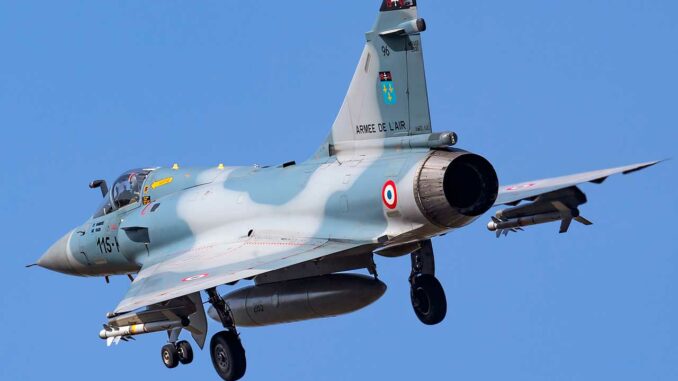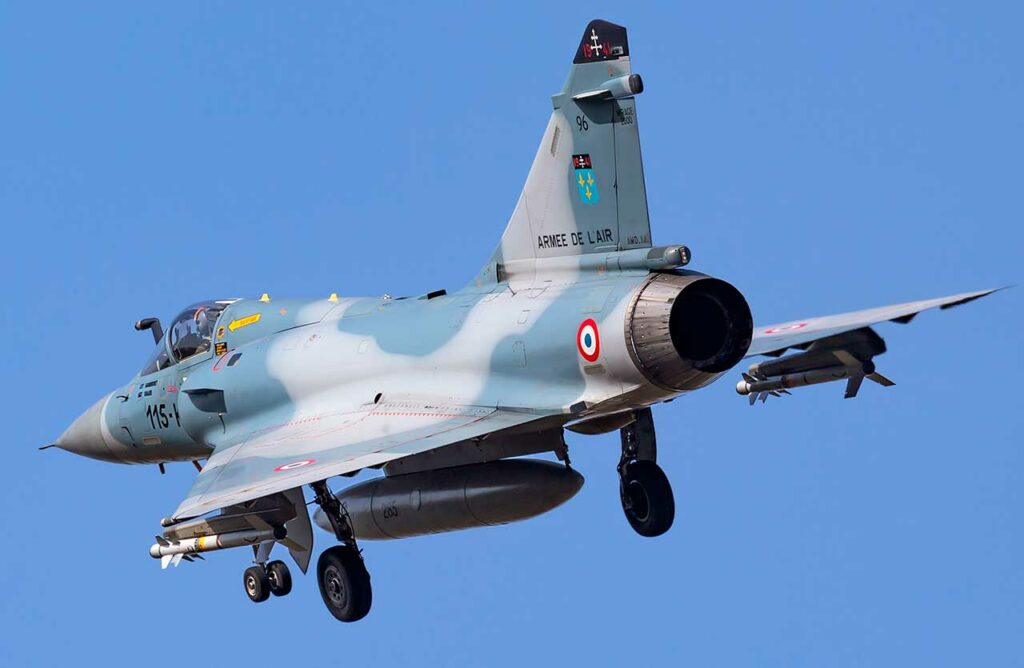
A French Mirage 2000-5 crashed on July 23, 2025. The accident raises questions about the condition of the fleet and the causes of the crash.
A rare but significant incident
On July 23, 2025, a Mirage 2000-5 belonging to the French Air Force crashed in an uninhabited area in southeastern France, with no casualties on the ground. The pilot managed to eject and was quickly taken into care by the emergency services. Although the incident did not cause any civilian injuries or significant material damage, it remains a cause for concern due to the nature of the aircraft involved: a high-performance single-seat fighter used for French air defense.
The Mirage 2000-5, developed by Dassault Aviation in the late 1990s, remains an important part of the national air defense system, even with the rise of the Rafale. Used in air policing, deterrence, and interception missions, this fighter jet remains active in several squadrons. It is precisely this strategic importance, coupled with the rarity of incidents involving this aircraft, that gives this accident particular resonance.
Beyond the initial cautious official statements, this accident raises questions about the state of the French fleet, maintenance, and the current capabilities of the Mirage 2000-5 to operate in an increasingly complex air environment.
An aircraft that remains essential to the French arsenal
The Mirage 2000-5 is a modernized derivative of the Mirage 2000C, designed in the 1980s. It entered service with the French Air Force in 2000, with its main mission being air interception. It is a single-engine fighter capable of reaching a speed of Mach 2.2, or more than 2,300 km/h. It is equipped with an RDY radar capable of tracking multiple targets at long range and can carry a variety of air-to-air missiles such as the MICA.
In total, around 30 Mirage 2000-5s remain in service with French squadrons, particularly with the 1/2 “Cigognes” fighter squadron based in Luxeuil. These aircraft regularly take part in air defense missions, including over French territory, as part of the permanent security posture.
Despite their relative age, the Mirage 2000-5s have undergone regular modernization programs. The airframes are monitored, the electronic systems are updated, and logistics are provided by French industry. However, these aircraft are gradually reaching the end of their operational life, which raises questions about the technical conditions in which they operate today.
This technical context makes the crash on July 23 all the more significant. It highlights the complexity of maintaining this fleet in operational condition and the need for clear decisions on their future in the coming years.

Circumstances still unclear but immediate institutional response
According to initial information released by the Ministry of the Armed Forces, the Mirage 2000-5 crashed in an uninhabited area, approximately 25 kilometers south of Valence, in the Drôme department. The pilot managed to eject in time and was recovered unharmed. A technical investigation has been launched by the State Aviation Safety Accident Investigation Bureau (BEA-É) to determine the exact causes of the crash.
The information available to date remains limited. No statement has mentioned any specific mechanical or human cause. Weather conditions at the time of the accident were stable. No external interference or hostile activity has been reported.
The Air and Space Force has temporarily suspended flights of other Mirage 2000-5 aircraft to allow for a preventive technical check. This type of measure, which is standard in military aviation after an incident, aims to avoid any risk of serial defects or structural problems. This suspension does not affect other flight operations, but illustrates the degree of vigilance applied in this type of situation.
At this stage, several hypotheses remain on the table: engine failure, loss of control, control failure, or human error. The fact that the incident occurred in a deserted area limits the immediate impact, but does not reduce its strategic and technical significance.
An aging fleet under operational pressure
The Mirage 2000-5 has been out of production since 2007. France has therefore decided to extend their operational service while investing in the ramp-up of the Rafale, the latest versions of which are intended to gradually replace all single-engine aircraft in the fleet. However, this transition is taking time.
At the same time, the Mirage 2000-5s remain mobilized for sensitive missions. In 2024, they provided air cover as part of the French deployment in Romania under NATO command and participated in several alerts in the Baltic Sea. In mainland France, their role remains critical in airspace surveillance, particularly for intercepting unidentified civilian aircraft or in the event of a terrorist alert.
This operational pressure, combined with a reduced fleet, places a direct strain on aircraft and crews. Flight hours are increasing, spare parts are less available, and maintenance is becoming more demanding. This context increases the likelihood of mechanical incidents, even though the Air Force has maintained an excellent level of safety to date.
It is important to note that the last crash of a Mirage 2000-5 in France occurred in 2019. The rarity of such events highlights the exceptional nature of this accident, but also serves as a reminder that the use of fighter aircraft over 25 years old carries increasing structural risks.
A strategic question about the pace of capability renewal
The accident on July 23 could intensify internal debates within the army and the ministry on the pace of withdrawal of the Mirage 2000-5. While the 2024-2030 budget provides for a ramp-up of the Rafale F4 and then the F5, some military voices believe that the schedule remains too slow given the wear and tear on the older aircraft.
The military programming law provides for the delivery of 42 new Rafale F4s by 2030. However, the first aircraft will not enter full service until 2027-2028. Until then, the Mirage 2000-5 fleet will continue to carry a significant share of France’s interception capacity.
This accident could therefore accelerate certain budgetary or logistical decisions, particularly with regard to spare parts, reserves, and the conversion of aircraft that are still operational. The issue of pilot training is also central: should training continue on the Mirage 2000-5, knowing that they will be phased out by the end of the decade, or should their replacement be planned now?
Feedback from technicians and pilots, as well as the conclusions of the ongoing investigation, will be decisive in guiding these choices. The crash may be an isolated accident, but it is already acting as a warning sign for a segment of the fleet that is operating at the limits of its capabilities.
War Wings Daily is an independant magazine.